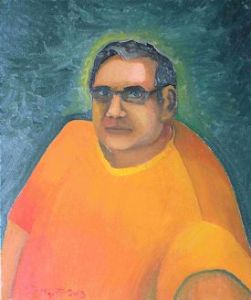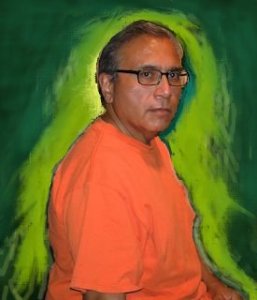Art blah blah blah…
More rules for painting. So does a statement like that draw in the painter or repulse the painter? It depends on everything. Does it draw you in with the promise of a revelation. That little bit of knowledge that could be the very thing your toolset needed. Or are you repulsed, because that’s an idea you’ve considered before; and then found another thought that dismissed the idea. And now, through no fault of your own, you’ve become too enlightened to reconsider it. Of course I can’t answer the question, but I will try to here. This post is only here for one reason. By chance you came to my website, which I will refer to as “site” from now on, and wandered to the post section. Art blah blah blah was created to alert you to the secret audio post blog portion of the site.
Talking Not Painting
Talking Not Painting is where I talk about my painting and concerns. It’s like an audio journal. You can access it here.
Rules for Painting
I enjoy reading what other artists have to say about painting since I always strive to learn more about the craft, as well as furthering my own growth in self-expression. All artists have their convictions about what should be done…in order to make a painting; what many contemporary painters concur and their work shows it, is that there are no rules in painting. Some of the so-called “rules” that I have come across seem unreasonable e.g.: don’t use white because it dulls the intensity of the hue or, never use the paintbrush to mix paint.
I don’t pay much attention to dogmatic rules but rather, it is observations that point out aspects of the process of painting what most intrigue me. A straightforward statement, like “painting is about putting the right colors next to each other”, seems obvious and simple enough – until you try to apply it…finding that right color; because the color you mix on the palette is going to look different when it is on the painting. So the execution of that principle can lead to a convoluted system of studies and methods to find the ‘right color’ or – you can just take a stab at it.
5/23/2021 – An update to the previous paragraph. Finding the right color is pretty much taking a stab at it. So much takes place on the palette; how much medium or turps to use and balancing the different pigments in the mix. I have carried the paint to the painting surface just to see what it’ll do and go from there. I have scrapped or wiped of the paint if it was to much of something.
An artist once stated that her job is to “eliminate clichés”. I pondered this idea and it applies to so many phases of creating a painting. Her incentive to avoid her clichés and myself avoiding mine as well, are going to come from our different viewpoints. I want each of my paintings to keep me interested as I work on them, but I find that my resolutions to problems remain unchanged; while knowing that there are a variety of approaches to my solutions. Finding her Idea insightful will help me incorporate these undiscovered solutions and, in doing so, will keep my fascination with the work.
Another rule that I have adopted as part of my process, is to take time to stand back and look at the painting – look at it a long time. As I paint, all of the art / painting theory goes off into the corner of my mind, because what is happening before me guides my next action and not the rules. So taking time to see where I have gone is important – so as to find out where I am; in standing back, I can see all of my self-imposed rules and all of those that I have broken…all in search of the final expression.
What is Art?
What is art? The cave paintings in Spain, ancient Egyptian artifacts, Greek sculpture and Italian fresco paintings have all been determined to be art; but so is a urinal turned on its side and renamed Fountain. So the definition of art today has evolved to “it’s any human idea or undertaking” or “it’s art if I say it is”.
I think the answer can be twofold based on who is responding to the question – the artist or the audience. To the artist, art is a motivation to create. As for myself, life’s experiences leave me with a desire to react to the event. Painting a picture is how I’ve learned to come to terms with my feelings. And after the making of the picture, if I have been true to myself, the motivation is purged and artwork is the result. I proclaim it “Art” even if no one else says it is.
The artist shows the piece and if they have been inventive and skillful it should be clear what the intent of the work is. At this point the audience judges the work great, good, bad or non-art. An individual can be moved by a piece for whatever reason and proclaim it as great art and the rest of the world can designate it as non-art; so the consensus is that it is non-art. However, the context in which the artwork is viewed can alter the verdict. What if, in the future, that non-art piece resurfaces and a deeper understanding and appreciation that corresponds with the artwork emerges; then the agreement at that time would most likely be that it is art. Whew, we could go on forever with that one.
Searching for one definition of art is futile. I like the pragmatic definition that one of my favorite artists put forth: “You make something from nothing and people pay you for it.”

